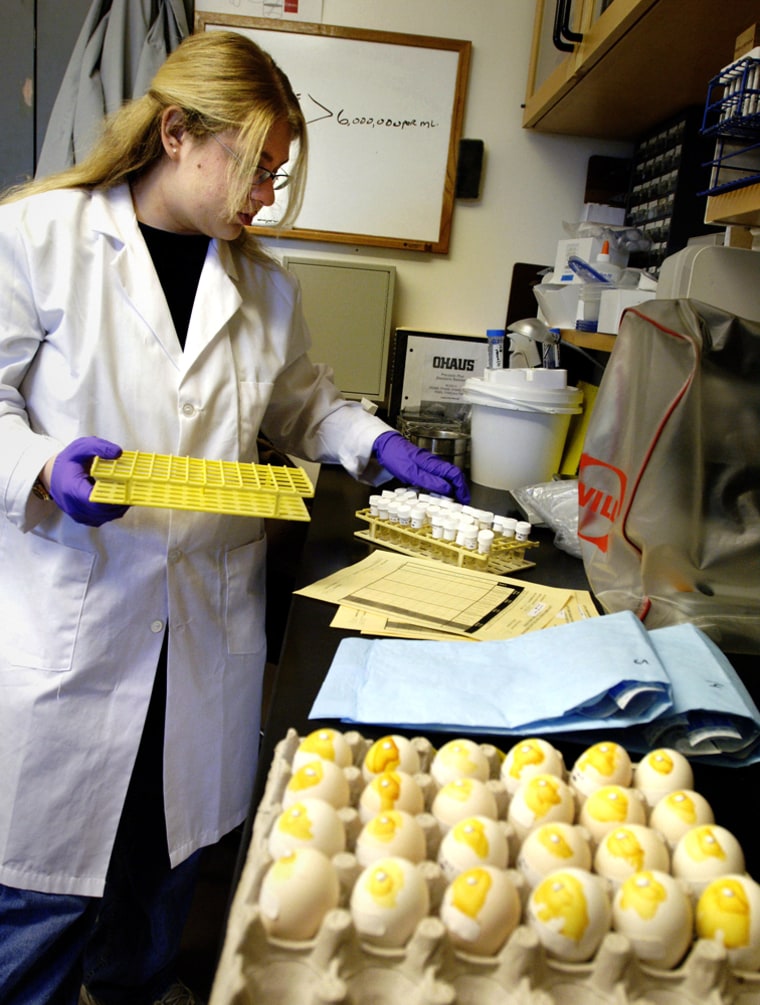The lethal avian flu that is spreading rapidly around the world could soon infect wild birds and domesticated flocks in the United States, U.S. Health and Human Services Secretary Michael Leavitt said on Wednesday.
In testimony to a congressional panel on his agency’s budget for combating a possible avian flu outbreak among humans, Leavitt told senators that no one knows when or if the virus will pose a threat to people. But, he said, “it’s just a matter of time -- it may be very soon” when wild birds and possibly poultry flocks contract the disease.
Leavitt said that infection of birds alone in the United States with the H5N1 virus would not create a public health emergency. Such an emergency would occur if the disease mutated so that it became easily transferred from human to human.
The H5N1 disease so far has killed 94 people in seven countries.
Nevertheless, Democrats on the Senate Budget Committee criticized the Bush administration’s preparedness, saying not enough federal funds were being allocated for vaccine production, stockpiling other medical supplies, disease detection and community readiness.
“It could be the disaster of our time. Two billion dollars is not enough,” North Dakota Sen. Kent Conrad, the senior Democrat on the committee, told Leavitt.
Conrad was referring the $2.3 billion in additional emergency funds the Bush administration has requested from Congress. Late last year, Congress approved a first injection of more than $3 billion in emergency money.
While U.S. poultry flocks have suffered from isolated cases of highly contagious avian flu, they have not yet been hit by the virulent H5N1 strain that has killed or led to the culling of about 200 million birds, mostly in Asia, since late 2003.
Recently, the animal disease has been found in western Europe and worries escalated this week when German authorities said avian flu may have jumped species and killed a cat.
So far, human fatalities have largely been limited to people who have had close contact with sick birds.
Stockpiling anti-viral drugs
Leavitt told the committee that by the end of this year, the United States will have about 20 million doses of anti-viral drugs, mostly Tamiflu, stockpiled.
The health department announced Wednesday the government has purchased more than 14 million courses of antiviral treatments from Roche Holding AG and GlaxoSmithKline Plc in preparation for a possible avian flu pandemic among humans.
The agency has already purchased 5.5 million courses of antiviral drugs for its government stockpile.
Other countries and some consumers also have rushed to stockpile the drugs in the hopes that they will prevent infection or at least relieve symptoms from the so-called bird flu.
Under the Bush administration’s plan, the agency aims to have enough medication to treat 25 percent of the U.S. population in the event of an outbreak.
Last month, Roche officials said federal officials had agreed to buy 46 million rounds of its treatment.
Experts consider Tamiflu their main choice, but its effects against the virus are not well known, and it must be given early on in the infection.
Vaccine years off
The development of a vaccine is three to five years away, Leavitt said. He downplayed chances that this timetable could be accelerated significantly and added that even with vaccine technology, it would take drug companies six months after the start of a pandemic to produce an effective one.
“In the first six months of a pandemic we are dependent on basic public health, social distancing; every business, every school, every church, every county to have a plan,” Leavitt said, adding, “We are overdue (for a pandemic) and under-protected, but we are moving with dispatch.”
Leavitt also was skeptical that the federal government could provide all localities with the full arsenal of basic medical equipment, such as ventilators, masks, gauze and gloves, needed during a pandemic. That surprised Senate Budget Committee Chairman Judd Gregg, a New Hampshire Republican, who said he had thought the billions of dollars being spent would cover such stockpiles.
Instead, Leavitt put the responsibility of local preparedness mostly with local officials.
